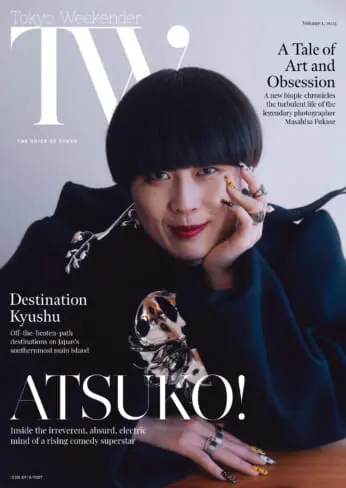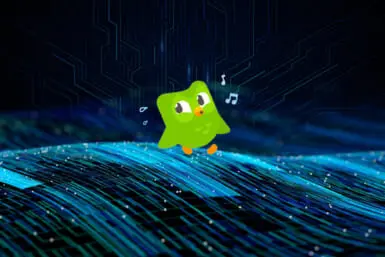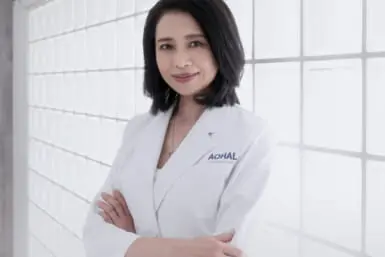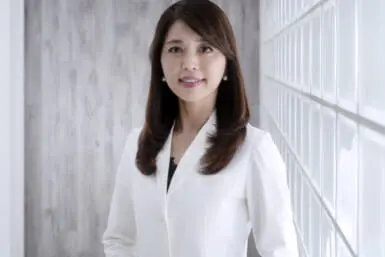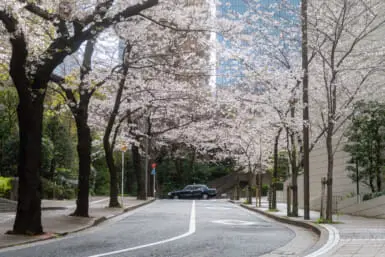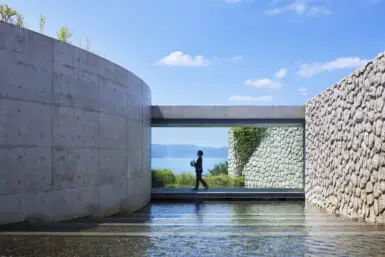by Elyse M. Rogers
MORE ABOUT THE JAPANESE FOUNDATION FOR CANCER RESEARCH
In my last column I wrote about the Japanese Foundation for Cancer Research and about its Cancer Chemotherapy Section, one of the three main sections of the Foundation. The other two are the Cancer Institute and the Cancer Institute Hospital. I’d like to tell you about those two parts today.
(There are other parts as well, including a School of Nursing, a Pharmacy, a School of Cytotechnology, etc.) I’d also like to mention the Mass Screening Center where any of us can go for cancer screening tests.
THE CANCER INSTITUTE
While the Cancer Chemotherapy Center concentrates on drug therapy for cancer, the institute itself looks at the mechanism of cancerization and the characteristics of cancer cells. It is working on applying advanced biotechnology, including recombinant DNA techniques (gene cloning), to cancer research. Director Haruo Sugano oversees both this type of research and the research being done at the Cancer Chemotherapy Center.
THE CANCER INSTITUTE HOSPITAL
The hospital is certainly the most outwardly visible part of the foundation complex. Directed by Tatano Saito M.D. (who also heads the department of Internal Medicine), it is a large facility with 511 beds, staffed with about 70 doctors (including residents, who come from many different universities around Japan) and 385 nurses.
Dr. Isao Nakao, the Associate Director of Internal Medicine, and a friend of Dr. Tsukagoshi al the Chemotherapy Center (introduced in my last article) was kind enough to tour me around the hospital facilities.
All the departments you’d expect are covered here, but the departments of medicine and surgery are particularly large. There are six operating rooms, a recovery room for 30 patients, and lots of very impressive new diagnostic and treatment machines. They have a two special Gyroscope X-ray machines that can turn the patient in almost any direction for the best picture. This is used particularly in stomach X-rays, where the patient drinks a barium solution that can be visualized on X-ray. By changing the position of the patient, better X-ray pictures and therefore a more accurate diagnosis can be established.
For radiation therapy they have a new Linear Accelerator which I understand cost ¥150 million (U.S. $12 million). In the lab they have a new machine for blood chemistry that can process an almost amazing 350 tests per hour; it also had a high price tag of about ¥170 million (U.S. $1.36 million.).
If those figures aren’t enough to impress you, then the new MRI they’ll be getting “within this year,” according to Dr. Saito, might. It will cost more than ten times as much as either of those other two machines.
The Hospital Ambience
The building has two wings, with the South wing having eight floors, and the older North wing seven floors. The two buildings share a pleasant roof garden from which one can sec Mt. Fuji on a clear day (it wasn’t at all clear the day I was there). There is also a cheerful cafeteria on the 7th floor of the North wing.
Most patient floors arc set up in normal hospital fashion, with rooms lining the hall, and treatment rooms and nurses stations in appropriate places. There are some private rooms, (some with bath), but many are larger, ward rooms. There is an additional charge, of course, for the private or semi-private rooms.
The Outpatient Clinic
The outpatient clinic is a busy place, serving about 800-1,000 patients per day. All patients are welcome, but. again, there are no English language signs and no English language forms. The hours are the usual clinic ones, with new patients preferred during the morning hours (9-11:30 a.m.).
Physical Examination Programs
They do have ningen dock programs of varying length and intensity. So, if you want to have a routine physical examination, and particularly if you have had cancer in the past or arc worried about one particular type of cancer (because you have a parent who died from it, or you have symptoms) this might be a good place to get that examination. Physicals are by appointment only, so call for more information and prices, if you are interested.
Remember that this is a hospital that specializes in cancer. So, it usually provides care for patients who have a previous diagnosis of cancer, are sent by another physician, or have some symptoms that make them fearful they might have cancer.
MASS EXAMINATION (CANCER SCREENING) CENTER
In addition to the more complex, complete physical examination, the Foundation offers an early-detection clinic for stomach, lung and esophageal cancer. The mass screening center was opened in 1968 in cooperation with the Japanese Cancer Society.
Although the ambience is “strictly Japanese” in the center, foreigners (over 40 years of age) who speak Japanese or have a spouse or friend who is willing to accompany them, may want to use this service.
This service is unusual, I believe, in that you do not have to be referred by a physician, and the results of the test will be sent to you directly, within 14 days. So, if you fear you have one of these three types of cancer, or have had a history of such, you might want to use this service either on your doctor’s advice or on your own.
This service is by appointment only, and the center is open from 9 a.m. to 3 p.m. The fee schedule is as follows:
- Stomach, ¥3,500.
- Esophagus, ¥1,000.
- Lung, ¥1,000.
- Stomach, lung and esophagus all together, ¥5,000.
Call 918-0111, ext. 2590 or 2591.
The Cancer Institute Hospital and the Cancer Chemotherapy Center (where Mass Screening is conducted) are adjacent buildings about a 10-minute walk from Otsuka station on the Yamanote train line. There is one sign in English on the street in front of the station, telling you the direction in which to walk. See the map for more details.
The Cancer Institute Hospital, (Ganken Fuzoku Byoin), Kami-Ikebukuro 1-37-1, Toshima-ku, Tokyo 170. Phone 918-0111.
* * *
MR. OKA’S WALKING TOURS
On a lighter note, let me tell you about a delightful, healthy day I had recently. I’d seen “Mr. Oka” (Nobuo Okazaki) offer walking tours in our own Tokyo Weekender for many years, but I finally got around to calling that peripatetic gentleman and signed up for one of his “special” tours that included walking through a new part of Tokyo (for me) — the area around the Arakawa streetcar line.
We started at Waseda University and ended at Minowabashi, not too far from Asakusa Kanon Temple. We did a lot of walking but also used the streetcar for traversing the long distances. I learned a lot about Tokyo environs and its history, and got good exercise in the bargain.
So, for those who would like to see Tokyo “on foot,” and particularly those interested in history, I recommend Mr. Okazaki. He studies up on his subjects and his English is very credible.
His weekly Sunday tours are set up for the newcomer and cover the main, downtown areas (around the palace, etc) and the cost is ¥1,000 per person for the three-hour morning walk. If you want to do the afternoon tour of Shitamachi as well, (which he highly recommends) there’s an additional ¥1,000 charge. All transportation costs or admission charges are paid by each individual.
Once a month he has a “special” tour for those who know Tokyo better and would like to see different spots. (That’s the one I took.) He varies these so that over a 12-month period you’ll not repeat the same area.
He also docs “private tours” set up for individuals or groups on the basis of ¥1,000 per hour per person. (Not a bad idea if you have visiting friends but don’t have the time to tour them around.)
So, if you have the time, energy and inclination for some “Urban Hiking,” give Mr. Okazaki a call and sign up for one of his inexpensive but healthy ways to learn about our fair city. He’s a professional, doing these particular tours since 1983.
Look for his next ad in the Weekender or call him now for more information or to sign up. Nobuo Okazaki, Tour Director, Mr. Oka’s Walking Tours. Phone (0422) 51-7673.
